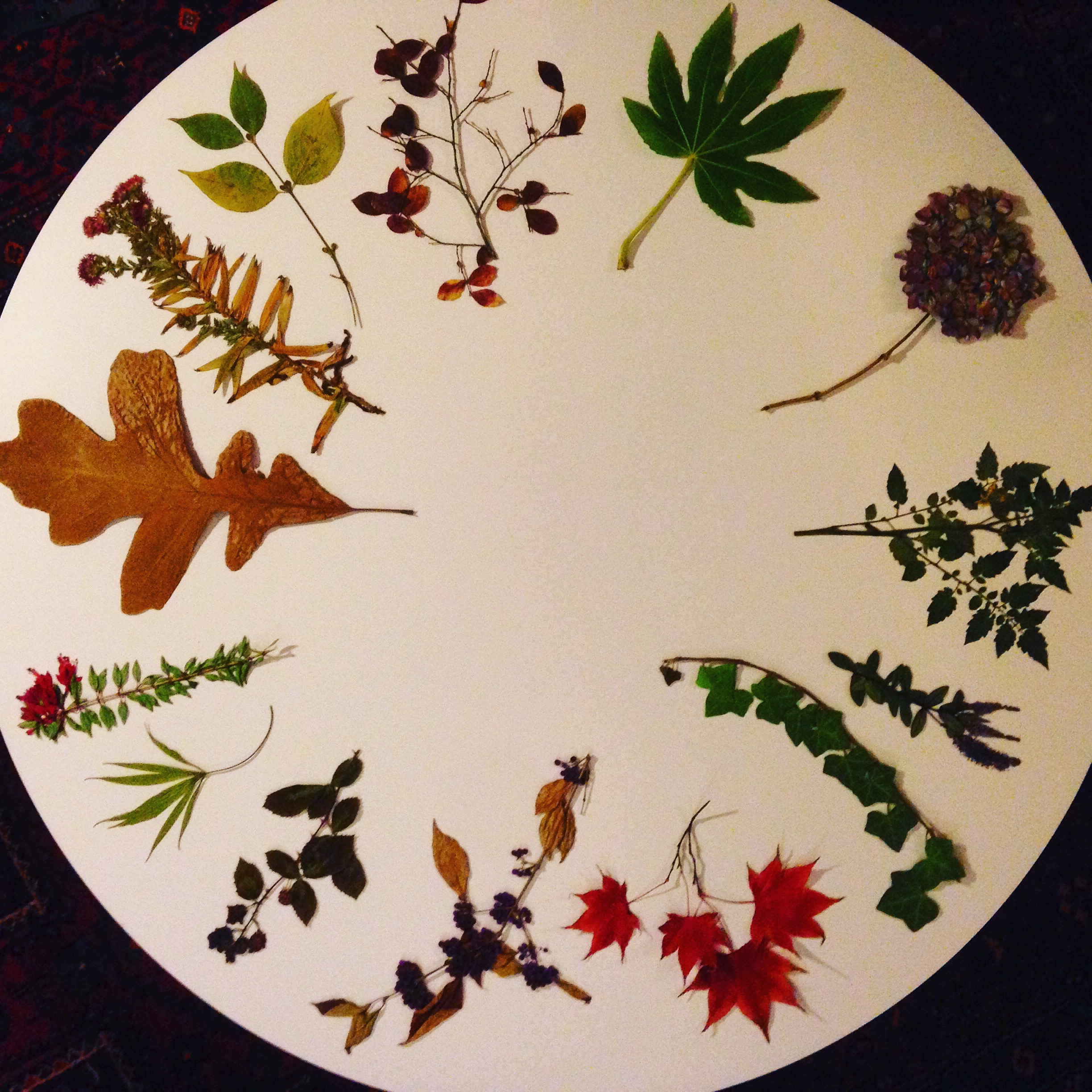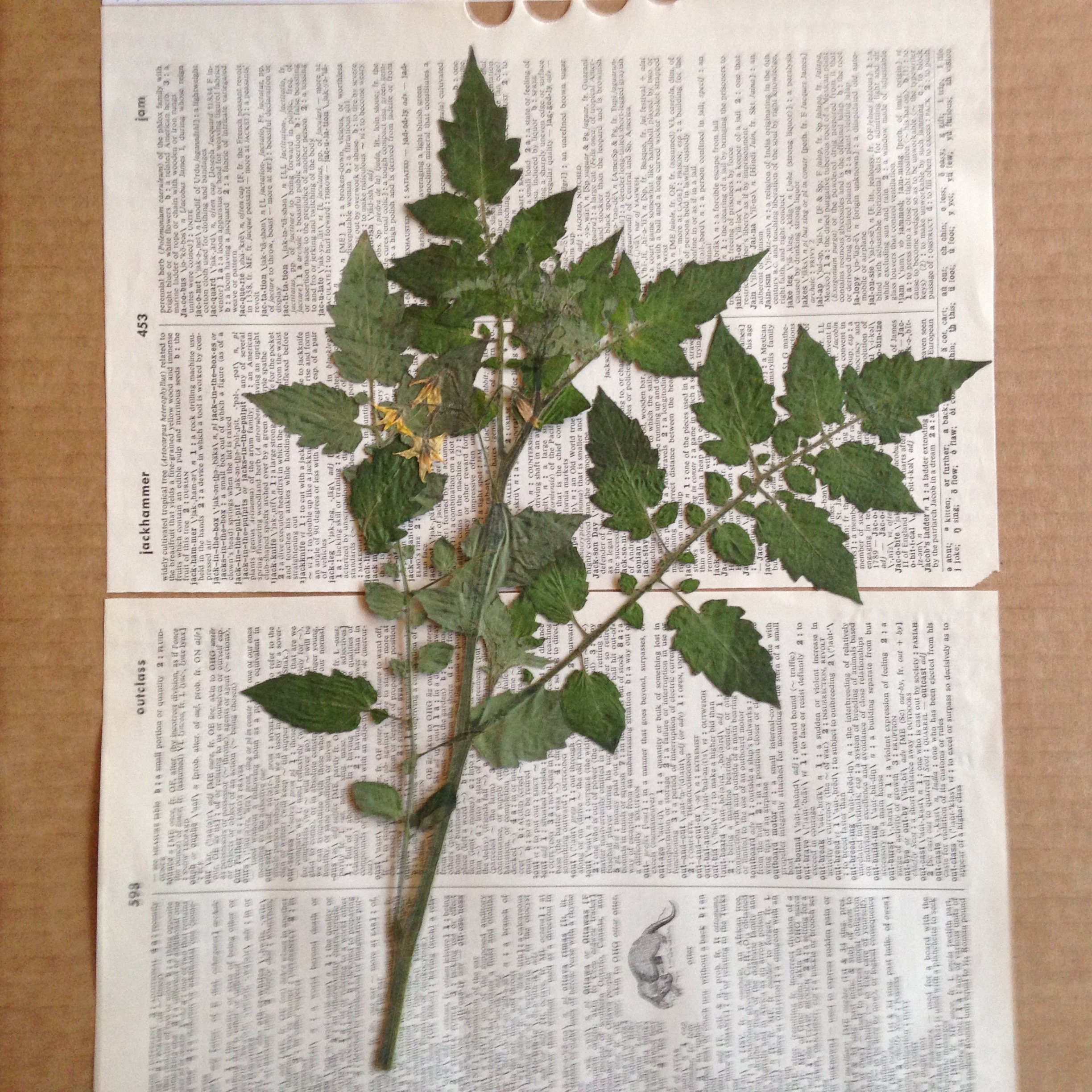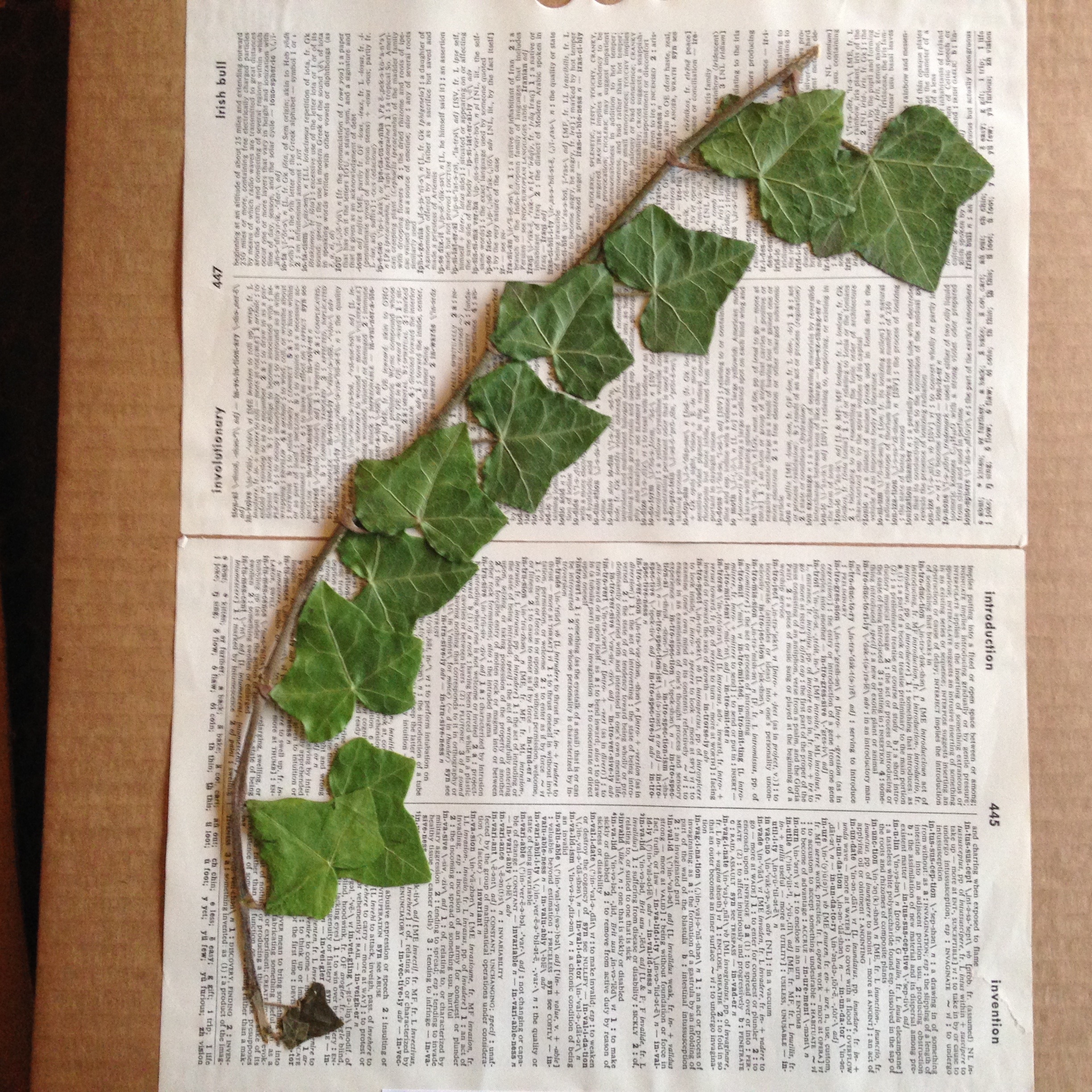A Perfect Arrangement: A Botanically-Inspired Seating Chart
As my botany instructor likes to say: “plants are like people: they’re all unique individuals.” So where better to look than the world of horticulture when plotting a seating chart for a dinner? This lineup of sparkling personalities was designed to keep the conversation (and wine) flowing—with a few irascible characters (and 3 unidentified party crashers) in the mix.*
THE FOODIE At first glance Lycopersicon esculentum ‘Garden Sweet’ could be mistaken for a simple girl (or guy) —but with perfect yellow flowers s/he’s the essence of complexity and certainly no garden variety tomato. With a bright-yet-sweet personality and a passion for all things culinary, Lycopersicon esculentum yields endlessly fruitful conversation and mixes brilliantly with others.
Botanical Name: Lycopersicon esculentum ‘Garden Sweet’ Common Name: Garden Sweet Tomato Family: SOLANACEAE Classification: Annual vine Habit: 6’ H x 1.5’ W Leaves: Compound, oddly pinnate Flowers: yellow Fruit: yellow Why Selected: Abundant fruit Other: Fantastic for cooking, especially in tomato tarts
THE NOVELIST Hebe ‘Amy’ exudes a quiet confidence, as natural beauties often do. What’s disarming is her lack of arrogance. She’s the kind of low-maintenance, generous friend we’d all love to have. Like most writers, she’s also a good listener and well-placed when seated by extroverted social butterflies, colorful birds and guests who lean toward stinging commentaries.
Botanical Name: Hebe cv. ‘Amy’ Common Name: Veronica Amy Family: SCROPHULARIACEAE Classification: Evergreen shrub Habit: Upright, 3’ Height; 2’ Spread Leaves: Opposite, lance-shaped, glossy, purple-flushed, dark green Flowers: Dense racemes of purple flowers Fruit: N/S Why selected: Attractive to bees, butterflies and/or birdsOther: If pruned immediately after blooming, may produce a second flush of flowers
THE ACADEMIC Though his lectures can get a bit rambling and out of control, Hedera helix is essential at gatherings where a keen intellect is required. Some people find him rather invasive, but he only shows his bad side when he feels insecure. (Recently, bad press called him a “noxious weed.”) Seat him next to a diplomat and Hedera helix will remain at his most charming.
Botanical Name: Hedera helix Common Name: English Ivy Family: ARALIACEAE Classification: Broadleaf evergreen ground cover Habit: 15-20 cm high, and vine Leaves: alternate, simple Flowers: greenish white flowers in globose umbels Fruit: berry-like, black Why Selected: It’s a symbol of fidelity and love Other: A good reminder that beautiful plants can be noxious when they are out of control
THE POET Few can resist the charms of Acer palmatum spp., a lively personality who adds color and depth with his every poetic word. He’s also a snappy dresser, and rarely seen without a bowtie. No doubt his sartorial displays reveal a desire to make a memorable impression—and with over 1000 cultivars in his family, who can blame him for wanting to not get lost in the crowd?
Botanical Name: Acer spp. Common Name: Japanese Maple Family: ACERACEAE Classification: deciduous tree Habit: Pendulous Leaves: simple, palmate Flowers: n/s Fruit: n/s Why Selected: Gorgeous fall color Other: Beautiful in all seasons, even when the tree is bare
THE ACTRESS Don’t be fooled by the extroverted nature of Callicarpa dichotoma—those bright purple berries are a brilliant distraction for a profound, intensely personal character. (Damn those pesky paparazzi, always lurking on the landscape in search of juicy gossip!) Sloppy reporting has unfairly linked her to dalliances with married men—but that was her cousin, Kolwitzia.
Botanical Name: Callicarpa dichotoma Common Name: Purple Beautyberry Family: LAMIACEAE Classification: Deciduous shrub Habit: 2-4’ H x 3-5’ W Leaves: Elliptic to obovate, opposite Flowers: Small cymes of pink to lavender flowers Fruit: lilac-lavender clusters Why Selected: The brilliant color of the berries that persist into early winter Other: Attracts birds
THE NATURALIST An acerbic, sharp-witted personality, this expert ornithologist will test you with a few barbs before revealing the sweeter side of his nature. Fortunately, extensive psychotherapy has helped him to recognize and manage emotional triggers. He won’t attack unless strongly provoked. Great parties need a bit of drama. Rubus ursinus will not disappoint.
Botanical Name: Rubus ursinus Common Name: Pacific Blackberry Family: ROSACEAE Classification: Evergreen, semi-evergreen shrub Habit: 10-20’ in length Leaves: Alternate, compound, 3 leaflets Flowers: White flowers with narrow petals Fruit: Small blackberries Why selected: Fabulous in pies Other: Ursinus: “a bear,” referring to a bear’s favorite food
THE BON VIVANT Philosophical and creative, Cannabis sativa is the natural life of the party, with an inclusive aura that puts everyone at ease. Wallflowers bloom in the light of this gregarious botanical, so put her next to shy types and watch as she draws them out of their shells. Cannabis sativa is like social glue, inspiring guests to share absurd, self-effacing tales that lead to riotous laughter.
Botanical Name: Cannabis sativa Common Name: Marijuana Family: CANNABACEAEClassification: Dioecious, evergreen annual herb Habit: tall, loosely branched up, generally 8 to 12 feet Leaves: simple, palmate Flowers: Male flowers are yellowish-green panicles, females are greenish-white axillary spikes Fruit: oval, unripe are green, brown in maturity Why Selected: Medicinal properties Other: Industrial uses
THE POLITICIAN Stately and dignified, Quercus macrocarpa is the sort who listens intently and weighs his words carefully. He’s the epitome of genteel discretion, though a bit of a ladies’ man. Despite his giant stature, Quercus macrocarpa is masterful with his hands: when he’s not stumping for re-election, he spends time with his easel and brush, painting pretty landscapes and flowers.
Botanical Name: Quercus macrocarpa Common Name: Bur Oak Family: FAGACEAE Classification: Deciduous tree Habit: 70-80’ height, developing in an oval form with a massive trunk and stout branches Leaves: Alternate, simple leaves: obovate to oblong-obovate Flowers: Flowers N/S Fruit: Acorns, enclosed more than half by a deep cap which is conspicuously fringed Why selected: Gorgeous amber-colored leaves in fall that look like “dancing dollies” Other: The tree in the arboretum at SCC feels ancient and wise
THE ARISTOCRAT Don’t let the reserved nature of Aster novae angliae fool you. Initially standoffish, but as the party proceeds her true colors will bloom, casting your fête in a rosy glow. Planning a successful dinner is a little like writing a piece of music. Aster novaeangliae is the unforgettable coda in the last movement. Beautiful, haunting, memorable.
Botanical Name: Aster novae angliae Common Name: September Ruby Family: ASTERACEAE Classification: Herbacious Perennial Habit: 3-4’ Height; 1-2’ Spread Leaves: Opposite, lance-like Flowers: Rose-pink with yellow centers Fruit: N/S Why selected: Flowers are attractive to butterflies Other: Late-bloomer, adds interest in late October
THE TECH ENTREPRENEUR Cornus mas makes money in her sleep with plentiful and diverse assets that pay dividends 365 days a year. Of course, like so many in the 1%, she makes a point of being down to earth, but in truth she’s best at the head of the table with room to spread out (or lean in). She’s enchanting in every season, so her social calendar is busy. Be sure to invite her well in advance.
Botanical Name: Cornus mas Common Name: Cornelian Cherry Family: CORNACEA Classification: Broadleaf Habit: Deciduous multi-stemmed shrub or small tree Leaves: simple, ovate, opposite Flowers: yellow, short-stalked umbels Fruit: oblong drupe, bright cherry red Why selected: Many seasons of interest Other: Hardy to Zone 4
THE WORLD TRAVELER A standout with a mysterious aura who asks more questions than she answers, with Fatsia japonica at the table, conversation will never get mundane. While some hosts approach a seating chart with the shared interests of guests in mind, often it’s lack of commonality that leads to the most successful events. Fatsia japonica keeps things interesting.
Botanical Name: Fatsia japonica Common Name: Japanese Aralia Family: ARALIACEAE Classification: Broadleaf evergreen shrub Habit: 6-8’, generally rounded Leaves: simple, palmate, serrate lobes Flowers: White, large terminal umbels Fruit: Fleshy, black Why Selected: Tropical appearance Other: The leaves are gorgeous when dried
THE BEAUTY WITH INTOXICATING PERFUME The French call it “sillage”—that cloud of heady fragrance that hangs in the air when a person leaves the room. Lavandula angustifolia is a soothing presence with classic grace. She’s the perfect antidote to high-strung or slightly retiring guests. (Place them between Lavandula angustifolia and Cannabis Sativa, of course.)
Botanical Name: Lavandula angustifolia Common Name: English Lavender Family: LAMIACEAE Classification: Herbaceous perennial Habit: 1-3’ H x 1-2’W Leaves: simple, opposite Flowers: purple terminal spikes Fruit: N/S Why Selected: Fragrance Other: Drought tolerant












